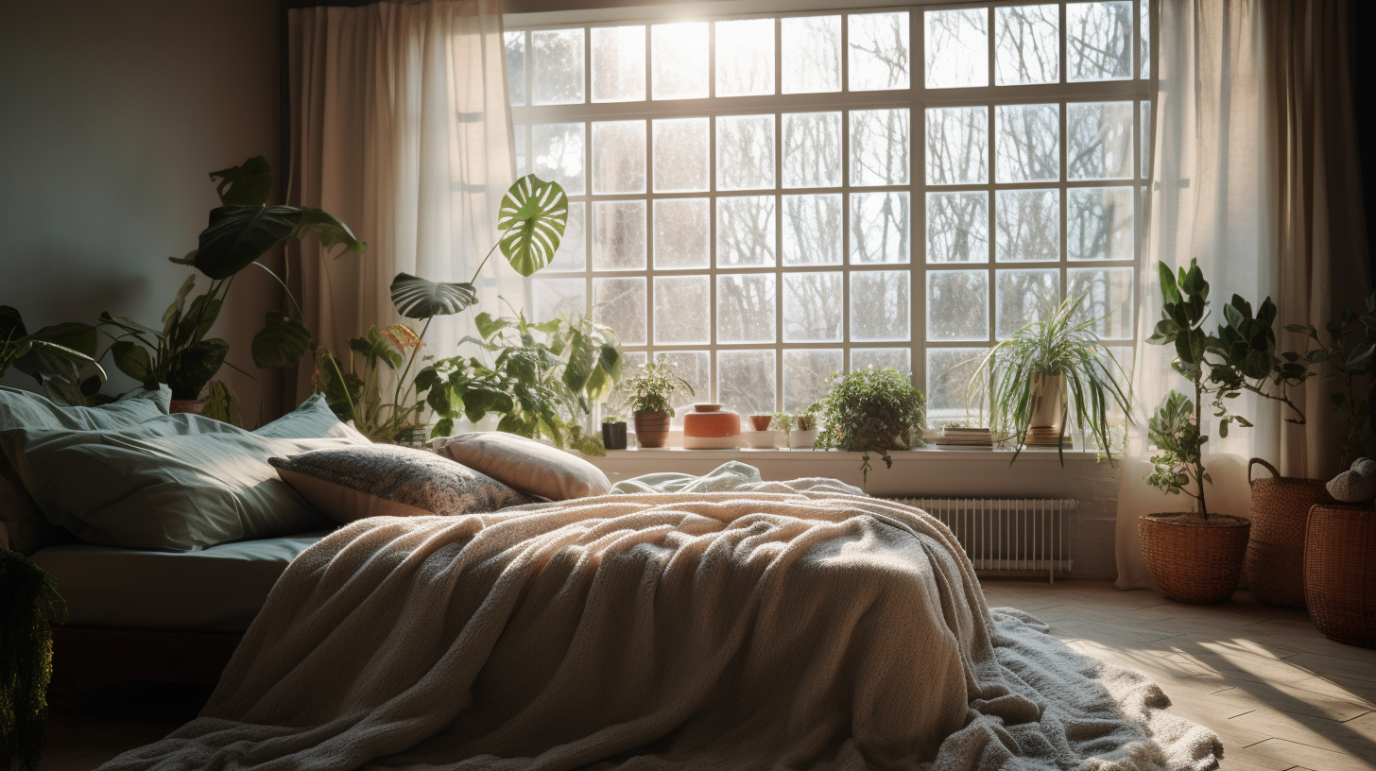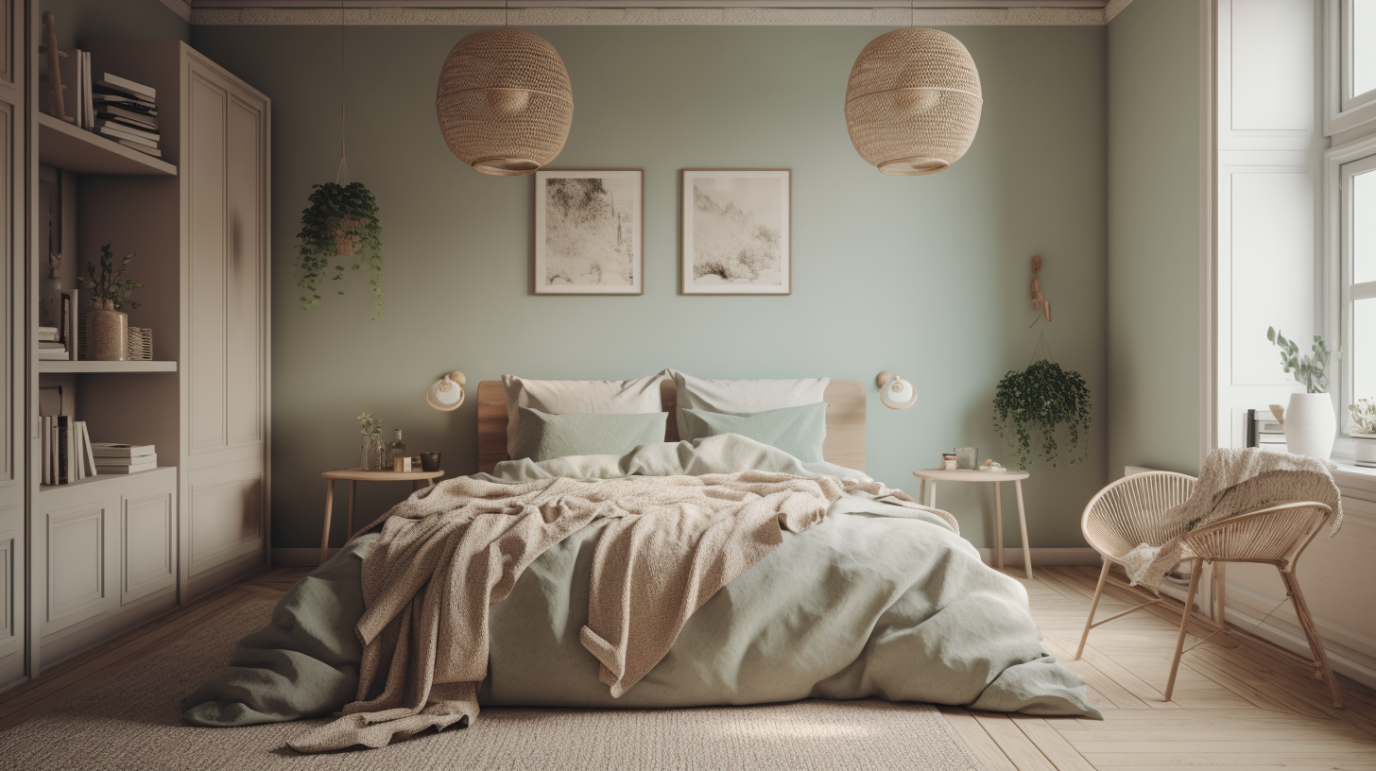Stop Metal Bed Frame from Squeaking
A squeaky metal bed frame can turn peaceful nights into restless ones. Discover effective methods to silence those creaks and enjoy uninterrupted sleep.
Key Takeaways
- Identify the noise source by removing the mattress and testing the frame.
- Tighten all bolts and screws to eliminate loose connections.
- Lubricate joints with appropriate products to reduce friction.
- Add padding between contact points to dampen noise.
- Ensure the bed is level to prevent movement-induced squeaks.
- Inspect the mattress and box spring for additional noise sources.
- Consider replacing the frame if it’s old or damaged beyond repair.
Understanding the Causes of Squeaks
Metal bed frames, while sturdy and durable, can develop squeaks over time due to various factors:
- Loose joints: Over time, bolts and screws can loosen, causing parts to rub against each other.
- Friction between components: Metal parts rubbing together without proper lubrication can produce noise.
- Uneven flooring: An unlevel floor can cause the bed frame to shift, leading to squeaks.
- Aging materials: Worn-out mattresses or box springs can contribute to noise.
Identifying the root cause is the first step toward a quieter sleep environment.
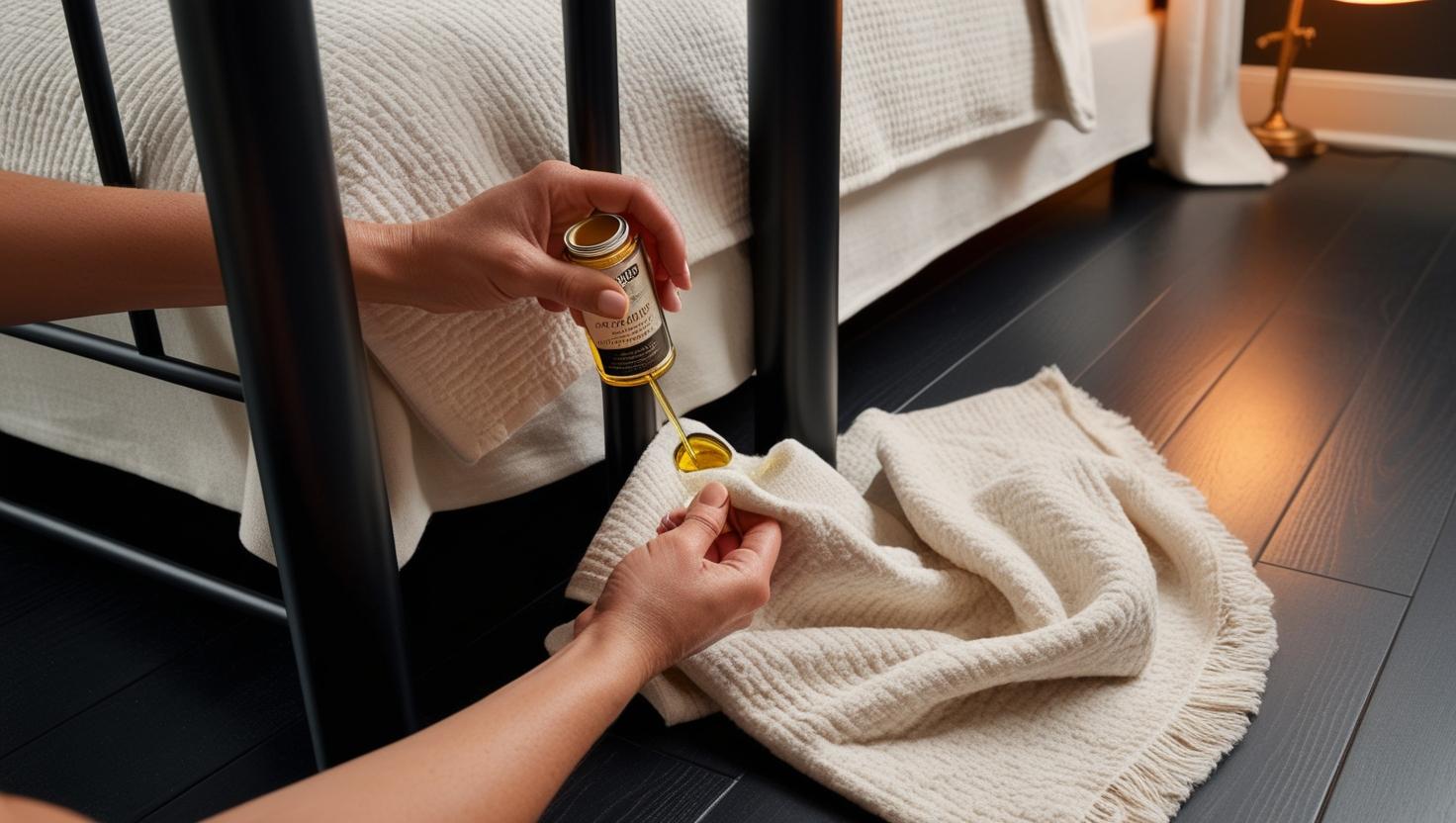
Step-by-Step Fixes
1. Tighten All Bolts and Screws
Loose hardware is a common culprit behind squeaky bed frames. Regularly inspect and tighten all bolts and screws using appropriate tools. Pay special attention to joints and connections where movement is most likely. For more detailed guidance, refer to our metal bed frame maintenance guide.

2. Lubricate the Joints
Apply lubricants like WD-40 or silicone spray to metal joints to reduce friction. Ensure you wipe away any excess to prevent dust accumulation. For a more natural approach, candle wax or bar soap can serve as temporary lubricants. The Sleep Foundation recommends these methods for quick fixes.
3. Add Padding Between Contact Points
Insert materials such as felt pads, rubber washers, or fabric between metal parts that come into contact. This cushioning can significantly dampen noise caused by friction. As noted by Architectural Digest, adding felt pads or rubber washers between metal or wooden parts can help absorb movement and prevent further squeaking.
4. Level the Bed Frame
Use a level to check if the bed sits evenly. If not, place furniture pads or folded cardboard under the legs to stabilize the frame and prevent movement-induced squeaks. For more tips on maintaining a quiet sleep environment, explore our article on how to stop bed noise.
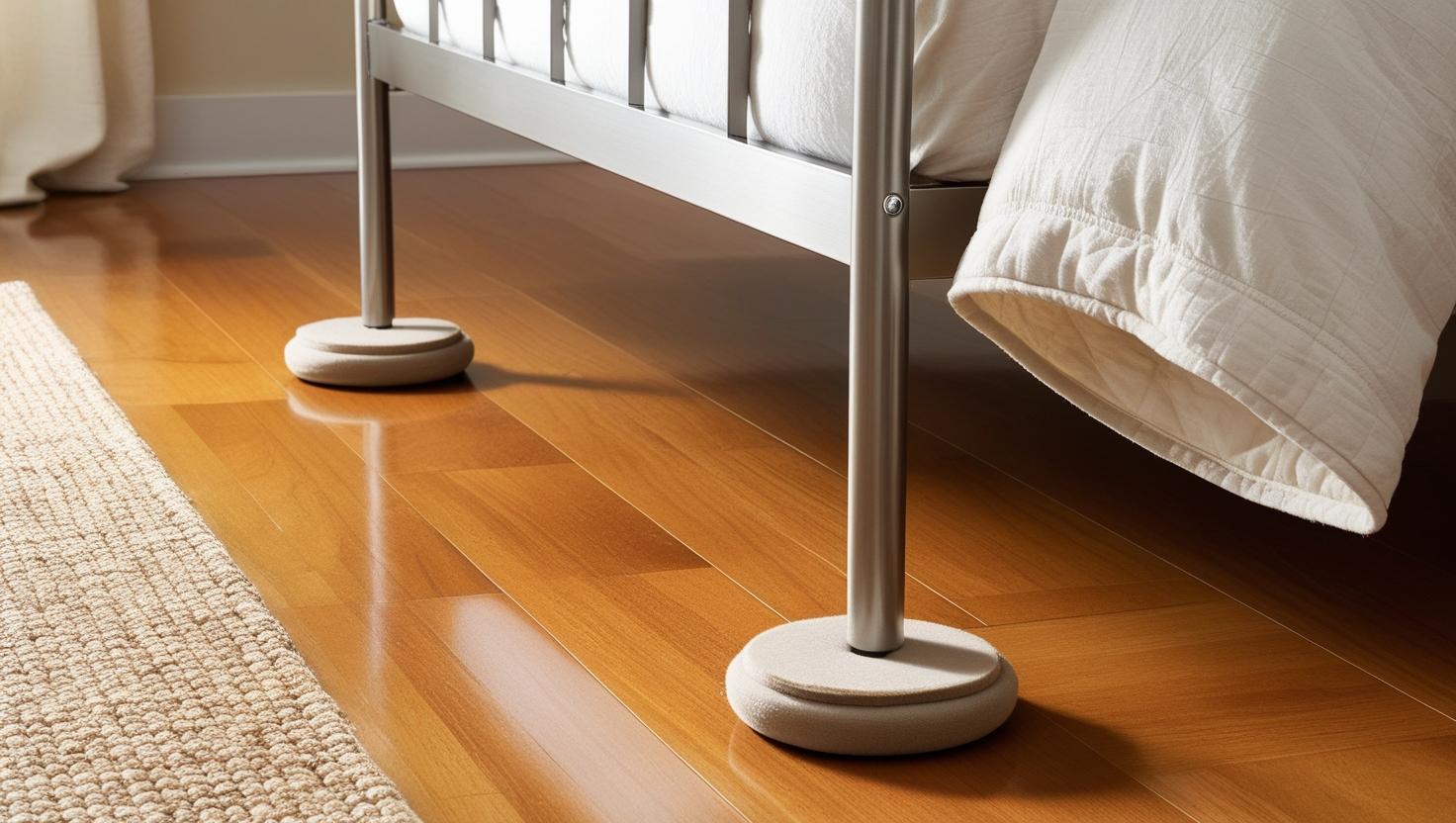
5. Inspect the Mattress and Box Spring
Remove the mattress and box spring to test them separately. If they produce noise, consider rotating, flipping, or replacing them. A worn-out box spring or mattress can be a hidden source of squeaks. The Sleep Foundation suggests that if the box spring is making noise, it’s likely coming from the metal coils, and replacing it may be the best solution.
6. Address Floor Contact
Place rubber or felt pads under the bed legs to prevent movement and reduce noise from floor contact. This also protects your flooring from potential damage. For additional insights, check out our guide on bedroom noise solutions.
7. Evaluate the Frame’s Condition
If the frame is old, rusted, or damaged, it might be time for a replacement. Investing in a high-quality frame can ensure long-term silence and durability. For recommendations on sturdy and quiet bed frames, visit our best bed frames article.
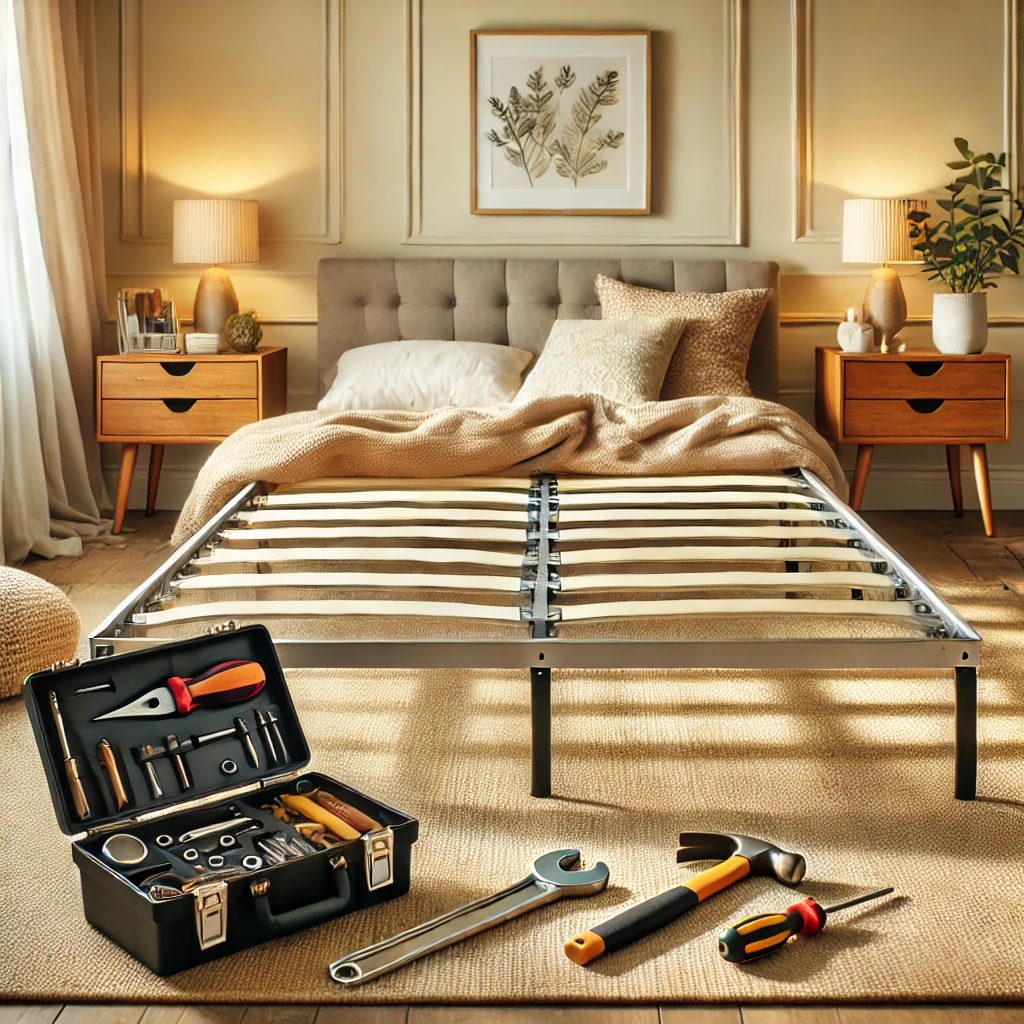
Additional Tips
- Regular Maintenance: Periodically check and tighten hardware to prevent future squeaks.
- Use a Mattress Topper: Adding a topper can reduce direct contact between the mattress and frame, minimizing noise.
- Consider a Platform Bed: Platform beds often have fewer components that can squeak compared to traditional frames. For more information, see our article on best platform beds.
By addressing the common causes of squeaks and following these steps, you can effectively stop a metal bed frame from squeaking and enjoy peaceful, uninterrupted sleep.
FAQ
- Can I use household items to fix a squeaky bed frame?
- Yes, items like candle wax, bar soap, or talcum powder can be used as temporary lubricants to reduce squeaks.
- How often should I check my bed frame for maintenance?
- It’s advisable to inspect and tighten your bed frame every 6 months to ensure stability and prevent noise.
- Is it better to replace a squeaky bed frame or fix it?
- If the frame is relatively new and the squeaks are due to minor issues, fixing is cost-effective. However, if the frame is old or damaged, replacement might be the better option.







